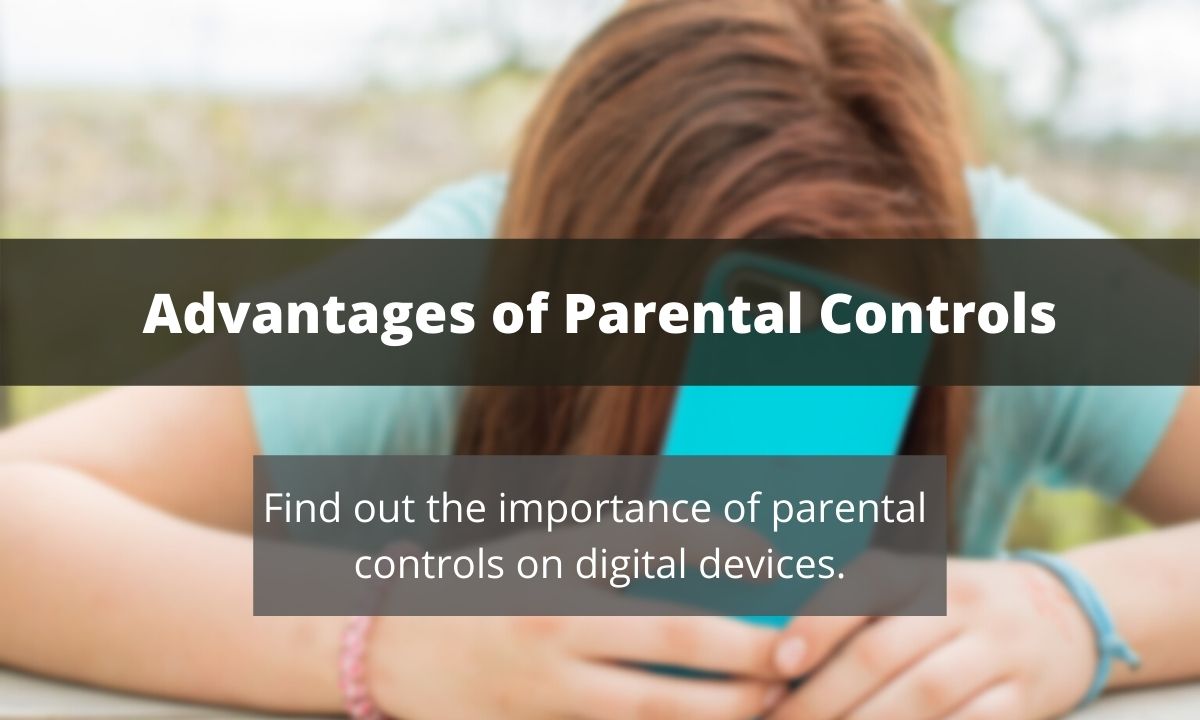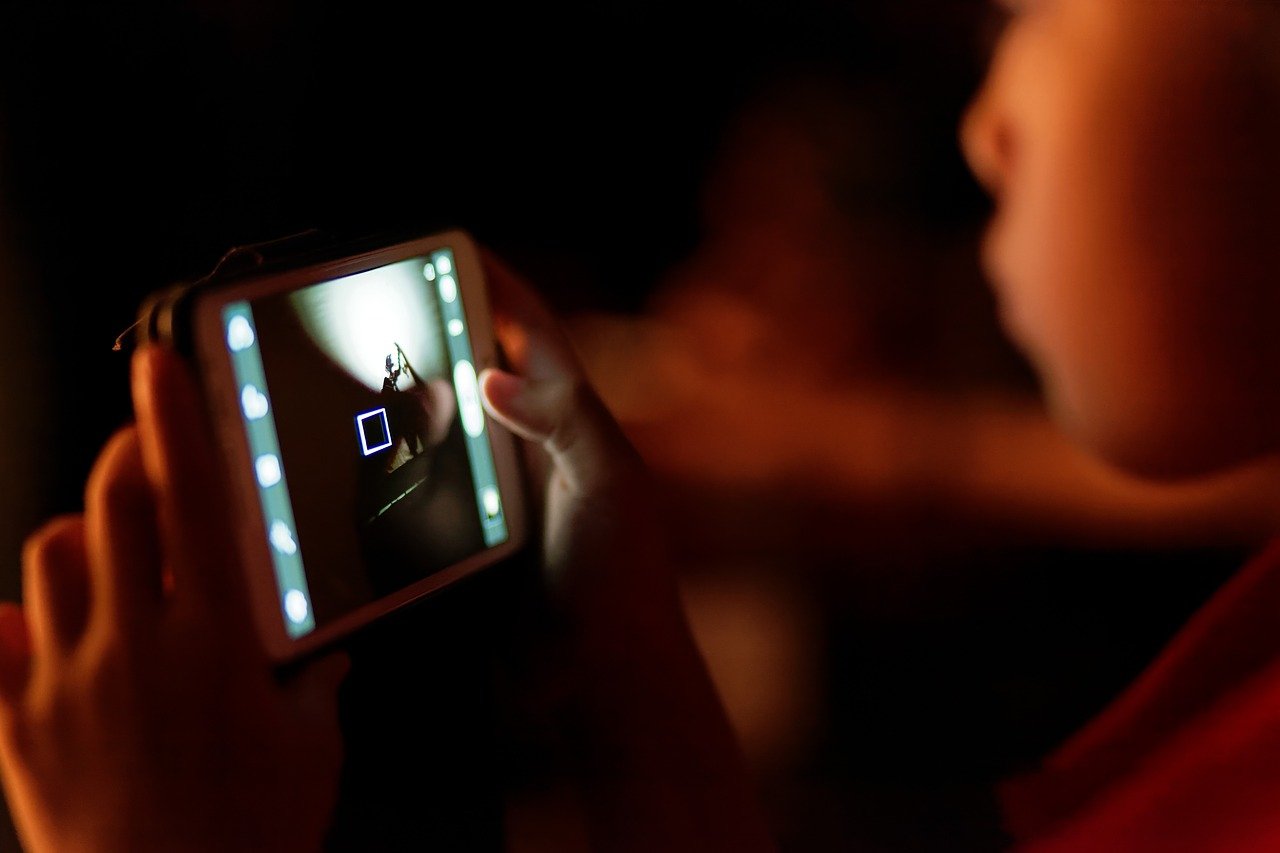Parenting in the digital age is more complex than it was before the rise in technology. The rapid advancements in technology present new and difficult challenges for parents to address. This is because it is now the parent’s responsibility to protect their children from the dangers of technology and the internet regularly. Children, however, are very savvy and have grown up in the digital age, which causes them to rely on devices more than the generations preceding them.

Children today not only use computers and smartphones to socialize but they have also become a necessity at school. Therefore, children and teens are likely to engage with devices for most of their day, often without their parents’ or teachers’ supervision, as digital devices are more accessible than ever.
Children and teens’ potential dangers while using devices include being exposed to explicit content too young, interacting with dangerous people, cyberbullying, identity theft, and overexposure to digital blue light. Luckily, along with the advancements in technology there have also been advancements in ways to protect children online and tools to protect them from the harmful effects of blue light.
This is why it is important to set parental controls and time limits on digital devices until children and teens are mature enough to handle the responsibility on their own.
The Benefits of Parental Controls
There are many benefits of parental controls on digital devices, however, it is also important to explain to children that you trust them as well. Parental controls should be used to protect children from harmful content and the first step in setting up these controls should be to make sure children and teens understand their purpose. Parental controls can:
- Protect Kids From Objectionable Content
The internet is flooded with inappropriate content and although children may not go looking for it, they may still come across it. By using parental controls, parents can block certain apps and websites from being accessed by their children. That being said, parents can’t block every single individual site that may be inappropriate for their children. However, with parental controls, parents can block specific digital pathways or categories from being accessed. For example, parents can specifically block all sites with adult content or gambling. This can keep them protected from explicit content and prevent kids from purchasing apps without permission.
- Limit Cyberbullying and Sexting
Smartphones and the internet have made children more vulnerable to the effects of cyberbullying, peer pressure, and sexting through social media and text. With parental controls, you can easily track conversations and content across text messages, call records, photos, websites, social media, and more. This will help you protect children from bullying, predation, and abuse.
- Limit Screen Time
Lastly, parental controls can help you limit screen time. There are many effective ways and tools to help protect your children from the negative effects of screens, but parental controls give you easy monitoring access. Parental controls give you the ability to track device usage and schedule times to lock devices so they aren’t being used too frequently.
Time Restrictions
Along with parental controls, setting time restrictions on digital devices is just as important. Digital screens are known to emit digital blue light, which is a high energy wavelength on the visible light spectrum. This wavelength has the ability to cause digital eye strain, burnout, eye fatigue and redness, headaches, disrupted sleep patterns, and more. This is because the high-energy wavelength stimulates the eye and mind, similar to the natural blue light that is emitted from the sun.

However, the difference is that kids are using digital devices much more frequently and in closer proximity as compared to their interaction with natural blue light. Digital blue light also has the ability to mimic natural blue light making the body think the sun is shining and it’s daytime. This disrupts your natural circadian rhythm, which is your internal clock that tells your body when it’s time to go to sleep.
There are multiple ways that digital blue light can affect kids when they are overexposed. Parents need to set strict time limits on children’s use of digital devices each day or make use of the tools that are now available to help combat the negative effects of blue light.
- Time Limits
According to the American Academy of Pediatrics (AAP), children between the ages of 2 and 4 should only have one hour of screen time per day, and parents should consistently limit screen time for kids 6 and up. It is also suggested that parents make sure media does not take the place of adequate sleep, physical activity, and other behaviors essential to health.
It is nearly impossible to suggest a specific time limit for various families and their children as each family’s day-to-day life is different. Therefore, it is up to the parents to determine how much screen time is right for their kids each day.
However, the AAP does suggest some effective ways to create screen-free time for children. For example, consider making bedrooms screen-free zones to prevent kids from using devices right before bed. Also, consider scheduling screen-free days or blocks of time each day where you instead spend time doing something as a family, like activities outside after a family dinner. Lastly, you might consider incentivizing them to earn their screen time. For example, allowing them an hour of TV or gaming time after they finish their homework or chores.
There are a lot of creative ways to help children reduce their screen time in the digital age but sometimes it’s unavoidable, like when they have online learning sessions or have to do research online. In this case, make use of the tools available to help protect kids from overstimulation to digital screens.
- Blue Light Glasses
Blue light filtering glasses are a simple accessory that can be purchased alone or as an add-on to your child’s pre-existing prescription. The lenses in these glasses are treated with a protective coating to block out the harmful blue light that is emitted from digital devices. As a result, kids can engage with digital screens while wearing blue light glasses to protect themselves from digital eye strain, burnout, and overstimulation. On occasion, when you are unable to limit children’s screen time due to online school or other commitments, blue light glasses are a great alternative to protect their eyes and mind.
While blue light glasses don’t filter out all blue light, they have the ability to reduce your child’s exposure to blue light rays by 80 percent or more and most blue light lenses also provide glare protection. In combination with screen time limits, children can be very well protected from the effects of digital screens, even when interacting with them is simply unavoidable. In the digital age, when technology is so heavily relied upon, it is in the best interest of parents and children to protect their eyes as best they can with helpful resources such as these.
- Night Shift Mode
Another alternative to limiting screen time is to set up night shift mode on all of your kid’s devices. Night Shift mode is intended for nighttime use to soften the brightness of screens during darker hours of the day. When Night Shift mode is activated and set to a warmer setting, your devices give off less blue light. Therefore, you should consider having Night Shift mode turned onto its warmer setting at all times to lessen your children’s interaction with blue light throughout the day.
Digital devices can provide kids with great resources, however, they can also harm them physically and mentally if they are being used inappropriately or too often. Setting up parental controls is an easy and effective way to teach children to use devices in moderation and appropriate and safe ways while they are young, which will also benefit them in the future. Sign up for a free trial of Family Orbit – parental monitoring app to gain control over your child’s digital device usage.
